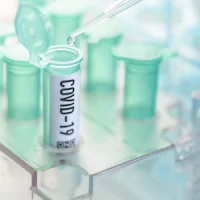In healthy women, breast density typically decreases as they increase in age. By contrast, as new research from Sweden has found, women with breast cancer showed an increased density over time, which was particularly notable in women over 55 years of age.
You might also like: Dense Breasts: Supplemental Screening Trends
In a case-control study, researchers with Skåne University Hospital, Lund, Sweden, observed a statistically significant difference in breast density change over time, with cases (51 women with biopsy-proven breast cancers) showing an increase in breast density by up to 1.7% as compared to controls (102 healthy women) with 0.3% density increase.
For this study, researchers examined serial mammograms for both healthy women from the screening population and women with breast cancer. Mammogram data and patient- and tumour characteristics were retrieved retrospectively from medical charts. The researchers used the free open source software, LIBRA, for quantitative measurement of breast density.
The researchers worked on the hypothesis that women who later develop breast cancer show a non-decrease or increase in density as compared to the expected density decrease over time in healthy women. The cases were matched for year of birth, number of screening rounds, and date for first and last mammograms with controls from the Malmö Breast Tomosynthesis Screening Trial in a 1:2 ratio. The median time between mammograms was 4.5 (1.3-11.9) years for cases and 4.7 (1.4-11.1) years for controls, averaging approximately three screening rounds (1–6 rounds).
"Noticeably, healthy women in this study had slightly higher breast density (median 28.1 %) than the women with breast cancer (median 24.3%) at their first mammogram. However, this difference was not statistically significant, and the same tendency has been seen in a previous study,” according to the researchers. Although the reason for such differences is not known, the researchers posited that the more robust and precise automated density measurement in this present study might account for this.
The study's findings have several future clinical implications, including that temporal changes in breast density might be an important imaging biomarker for assessing breast cancer risk. Knowing that older women – 55 years and above – showed an increase in density (in contrast to the expected density decline), could suggest a need for more frequent screening or screening with another breast image modality, such as ultrasound or magnetic resonance imaging (MRI), the researchers emphasised.
"Further, in future studies, with the availability of controls for data affecting density, observed density change might have potential as a predictive factor for breast cancer development," the researchers wrote.
Source: Elsevier
Image credit: iStock
Reference Sartor H et
al. (2020) Changes in breast density over serial mammograms: A case-control
study. Eur. J. Radiol. Article in press; available online 8 April.
https://doi.org/10.1016/j.ejrad.2020.108980










